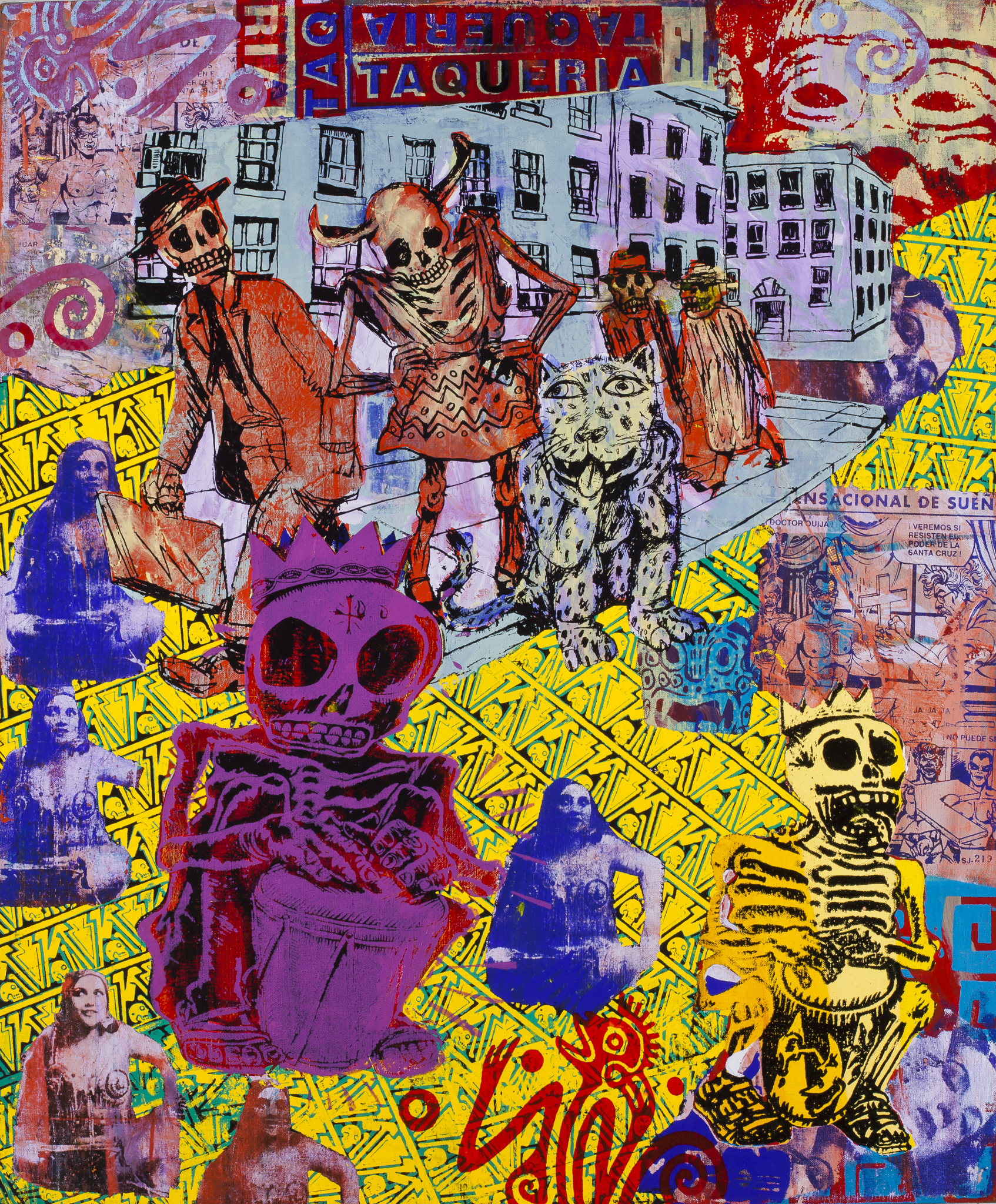When I was twelve years old, my oldest brother brought me to visit the National Museum of Mexican Art. I took in everything around me, excited to know that someone who shared my culture and experiences had created the pieces that I was seeing. When I think back to this first visit I remember knowing with a fierce confidence that my history and culture were important. On September 19, the NMMA held an opening for “Rito y Recuerdo,” its annual Day of the Dead exhibit. The event drew so many people that the museum staff was forced to turn away visitors, and even as they did more people continued to make their way to one of Pilsen’s most vital cultural centers. The NMMA boasts a great history coupled with an impressive permanent collection of 7,500 pieces. Founded in 1987 by Carlos Tortolero and a team of educators, the museum has since grown, not just in the scope of its collection and programming, but also in its impact on the community. Vanessa Sanchez directs Yollocalli Arts Reach, a youth education initiative of the museum. I recently had the chance to speak to her about education, Yollocalli’s beginnings, and the museum’s 60,000 students.
Could you describe the work you do for the education department, and how that fits into the bigger system of work the NMMA does?
Yollocalli is an innovative learning environment that encourages youth autonomy through a progressive dialogue in urban and youth culture. We provide free art and new media programs all year round such as street art, mural internships, experimental video, music, storytelling, and journalism. We also have a youth council, a team that works to develop projects that they see fit with the mission of Yollocalli and the community.
The program began in 1997, when the museum purchased an FM radio station and a new building. Two youth programs were developed: Yollocalli and Radio Arte. The museum wanted to create an educational space for the Pilsen community that would provide awardwinning, creative programs.
What was unique about the space was that it was solely for teens and young adults. It allowed for youth to feel safe and open to tell their own stories and create artwork that felt true to them and their peers. Although Yollocalli is no longer in its original home, the mission and vision stay the same, and our new home has provided us an opportunity to work with youth we have not worked with before. We have created a space in La Villita that was developed for teens and young adults to again provide an environment youth can feel welcome to and creative in.
Do you think that Yollocalli and the education programs sponsored by the NMMA make an impact on Pilsen?
The museum is located in Pilsen, and the education department has a strong history in Pilsen. From workshops, to tours, to being a part of a community event, the education department works very hard to provide arts programming to Pilsen. This past year the education department has partnered with six Pilsen schools and provided educational programming with teacher professional development, artist residencies, and afterschool classes.
With all programs, we worked with eighteen classrooms with approximately 540 students; just within Pilsen schools. Because the museum is nationally recognized, its reach extends beyond Pilsen. With Yollocalli in Little Village, community schools in the south and west sides of Chicago, and even through an artist exchange in New Mexico, the education department continues to expand its reach every year. Annually the museum serves over 60,000 students.
On a personal note, I am an alumni of the Yollocalli program. I started as a student in a mural program while in my first year of college and then became an intern, continuing to director of the program in 2011. Yollocalli helped me grow as an artist and a community member and I see that every day with the youth we serve.
We have many young people who go through the museum’s educational programs and grow up into the next community leaders and mentors. The museum is really unique in the services that it provides for the community.
How do you think the museum fits into the community? How do you think the neighborhood views the NMMA?
The community values the museum just as much as the museum values the community. The museum would not be in Pilsen if not for the support of the community in the 1980s. Today we may still hear from neighbors and other Chicago residents who have never been to the museum. But from people who do visit the museum or have participated in a program of the museum, you will only hear positive reviews about the staff and services it provides.
For people who are new to the NMMA: what is your favorite part of the museum?
It is free! You can’t say that about many museums, and it only shows how much the museum values providing art and cultural resources to all community members. Not only is the artwork beautiful and the content rich, but the building you are entering was made for the community, by the community, and will continue to serve the community in any way it can.
The National Museum of Mexican Art, 1852 W. 19th St. Tuesday-Sunday, 10am-5pm. Free. (312)738-1503. nationalmuseumofmexicanart.org

